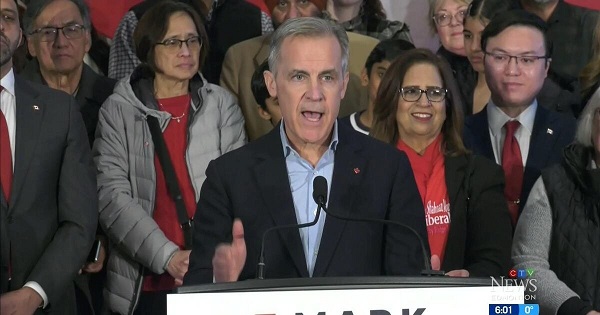Business
Amazon delivers hundreds of jobs to Calgary region

October 26, 2017 Media inquiries
The Alberta government is supporting 750 new full-time, permanent jobs in the province as Amazon opens a new fulfilment centre near Calgary.
Premier Rachel Notley unveils future Amazon Fulfilment Centre site.
Amazon fulfilment centres are the hubs where online orders are picked, packed and shipped to individual postal addresses. The 600,000-square-foot centre will be built in Balzac.
The new facility is one of several important expansions international businesses have made in Alberta this year, including RocketSpace and Swoop in Calgary, Champion Petfoods and Pinnacle in Parkland County, Google in Edmonton and Cavendish Farms in Lethbridge.
“Amazon’s expansion is more proof that Alberta is the best place in Canada to invest and do business. We pay billions less tax than any province, and have no payroll tax, health-care premiums or sales tax. Creating hundreds of good-paying, stable and long-term jobs is making life better for Alberta families.”
Rachel Notley, Premier
Amazon selected Alberta for its new customer fulfilment centre following trade missions from Economic Development and Trade (EDT) Minister Deron Bilous and Calgary Economic Development, most recently to Seattle. The company was also assisted on the ground by Invest Alberta, an investment attraction service run by EDT.
“The Calgary Region is the major transportation and logistics hub and the leading inland port in Western Canada so it is a natural fit for Amazon to locate one of its fulfilment centres here. The ability for companies to efficiently connect regional and global customers is increasingly important to business and the Calgary Region provides significant advantages, from geographic location to top-quality human resources.”
Mary Moran, president & Chief Executive Officer for Calgary Economic Development
The new facility will join Amazon’s network of current fulfilment centres in Brampton, Mississauga and Milton, in Ontario, and Delta and New Westminster in B.C.
“We are excited to continue our growth in Canada and especially in the greater Calgary community where we’ve already received great community support. Our ability to create more than 750 good-paying jobs with great benefits is the result of our dedicated workforce across the country who continue to raise the bar on operational excellence and customer obsession. Customers have seen the great work they do and we couldn’t be prouder of our ability to grow in Canada.”
Glenn Sommerville, Director of Amazon Operations in Canada
“When our government commits to job creation for the middle class, this is what it looks like! We know that global companies see Canada as a strong place to invest because of our talented and skilled workforce. We’re working with businesses to leverage strong investments and create well-paying, middle-class jobs. Congratulations to Amazon on this exciting new expansion and the creation of 750 jobs in Calgary.”
Navdeep Bains, federal Minister of Innovation, Science and Economic Development
Quick facts
- Amazon is partnering with QuadReal Property Group on the development and management of the fulfilment centre. For more information about QuadReal, visit quadreal.com.
- Amazon currently has 2,000-plus full-time fulfilment employees across the country.
- In total, Amazon employs more than 4,400 employees throughout Canada working at corporate offices, development centers and other facilities.
2025 Federal Election
As PM Poilievre would cancel summer holidays for MP’s so Ottawa can finally get back to work
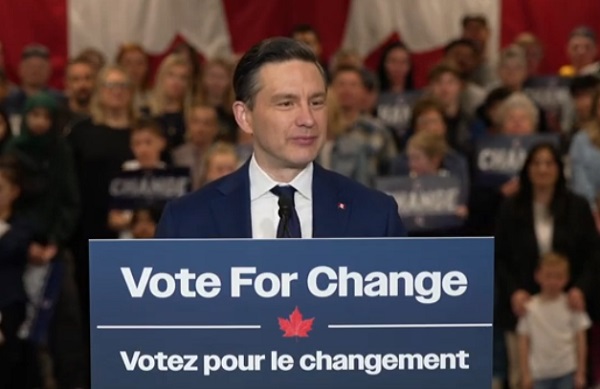
From Conservative Party Communications
In the first 100 days, a new Conservative government will pass 3 laws:
1. Affordability For a Change Act—cutting spending, income tax, sales tax off homes
2. Safety For a Change Act to lock up criminals
3. Bring Home Jobs Act—that repeals C-69, sets up 6 month permit turnarounds for new projects
No summer holiday til they pass!
Conservative Leader Pierre Poilievre announced today that as Prime Minister he will cancel the summer holiday for Ottawa politicians and introduce three pieces of legislation to make life affordable, stop crime, and unleash our economy to bring back powerful paycheques. Because change can’t wait.
A new Conservative government will kickstart the plan to undo the damage of the Lost Liberal Decade and restore the promise of Canada with a comprehensive legislative agenda to reverse the worst Trudeau laws and cut the cost of living, crack down on crime, and unleash the Canadian economy with ‘100 Days of Change.’ Parliament will not rise until all three bills are law and Canadians get the change they voted for.
“After three Liberal terms, Canadians want change now,” said Poilievre. “My plan for ‘100 Days of Change’ will deliver that change. A new Conservative government will immediately get to work, and we will not stop until we have delivered lower costs, safer streets, and bigger paycheques.”
The ’100 Days of Change’ will include three pieces of legislation:
The Affordability–For a Change Act
Will lower food prices, build more homes, and bring back affordability for Canadians by:
- Cutting income taxes by 15%. The average worker will keep an extra $900 each year, while dual-income families will keep $1,800 more annually.
- Axing the federal sales tax on new homes up to $1.3 million. Combined with a plan to incentivize cities to lower development charges, this will save homebuyers $100,000 on new homes.
- Axing the federal sales tax on new Canadian cars to protect auto workers’ jobs and save Canadians money, and challenge provinces to do the same.
- Axing the carbon tax in full. Repeal the entire carbon tax law, including the federal industrial carbon tax backstop, to restore our industrial base and take back control of our economy from the Americans.
- Scrapping Liberal fuel regulations and electricity taxes to lower the cost of heating, gas, and fuel.
- Letting working seniors earn up to $34,000 tax-free.
- Axing the escalator tax on alcohol and reset the excise duty rates to those in effect before the escalator was passed.
- Scrapping the plastics ban and ending the planned food packaging tax on fresh produce that will drive up grocery costs by up to 30%.
We will also:
- Identify 15% of federal buildings and lands to sell for housing in Canadian cities.
The Safe Streets–For a Change Act
Will end the Liberal violent crime wave by:
- Repealing all the Liberal laws that caused the violent crime wave, including catch-and-release Bill C-75, which lets rampant criminals go free within hours of their arrest.
- Introducing a “three strikes, you’re out” rule. After three serious offences, offenders will face mandatory minimum 10-year prison sentences with no bail, parole, house arrest, or probation.
- Imposing life sentences for fentanyl trafficking, illegal gun trafficking, and human trafficking. For too long, radical Liberals have let crime spiral out of control—Canada will no longer be a haven for criminals.
- Stopping auto theft, extortion, fraud, and arson with new minimum penalties, no house arrest, and a new more serious offence for organized theft.
- Give police the power to end tent cities.
- Bringing in tougher penalties and a new law to crack down on Intimate Partner Violence.
- Restoring consecutive sentences for multiple murderers, so the worst mass murderers are never let back on our streets.
The Bring Home Jobs–For a Change Act
This Act will be rocket fuel for our economy. We will unleash Canada’s vast resource wealth, bring back investment, and create powerful paycheques for workers so we can stand on our own feet and stand up to Trump from a position of strength, by:
- Repealing the Liberal ‘No Development Law’, C-69 and Bill C-48, lifting the cap on Canadian energy to get major projects built, unlock our resources, and start selling Canadian energy to the world again.
- Bringing in the Canada First Reinvestment Tax Cut to reward Canadians who reinvest their earnings back into our country, unlocking billions for home building, manufacturing, and tools, training and technology to boost productivity for Canadian workers.
- Creating a One-Stop-Shop to safely and rapidly approve resource projects, with one simple application and one environmental review within one year.
Poilievre will also:
- Call President Trump to end the damaging and unjustified tariffs and accelerate negotiations to replace CUSMA with a new deal on trade and security. We need certainty—not chaos, but Conservatives will never compromise on our sovereignty and security.
- Get Phase 2 of LNG Canada built to double the project’s natural gas production.
- Accelerate at least nine other projects currently snarled in Liberal red tape to get workers working and Canada building again.
“After the Lost Liberal Decade of rising costs and crime and a falling economy under America’s thumb, we cannot afford a fourth Liberal term,” said Poilievre. “We need real change, and that is what Conservatives will bring in the first 100 days of a new government. A new Conservative government will get to work on Day 1 and we won’t stop until we have delivered the change we promised, the change Canadians deserve, the change Canadians voted for.”
Automotive
Canadians’ Interest in Buying an EV Falls for Third Year in a Row

From Energy Now
Electric vehicle prices fell 7.8 per cent in the last quarter of 2024 year-over-year, according to the AutoTader price index
Fewer Canadians are considering buying an electric vehicle, marking the third year in a row interest has dropped despite lower EV prices, a survey from AutoTrader shows.
Forty-two per cent of survey respondents say they’re considering an EV as their next vehicle, down from 46 per cent last year. In 2022, 68 per cent said they would consider buying an EV.
Meanwhile, 29 per cent of respondents say they would exclusively consider buying an EV — a significant drop from 40 per cent last year.
The report, which surveyed 1,801 people on the AutoTrader website, shows drivers are concerned about reduced government incentives, a lack of infrastructure and long-term costs despite falling prices.
Electric vehicle prices fell 7.8 per cent in the last quarter of 2024 year-over-year, according to the AutoTader price index.
The survey, conducted between Feb. 13 and March 12, shows 68 per cent of non-EV owners say government incentives could influence their decision, while a little over half say incentives increase their confidence in buying an EV.
-
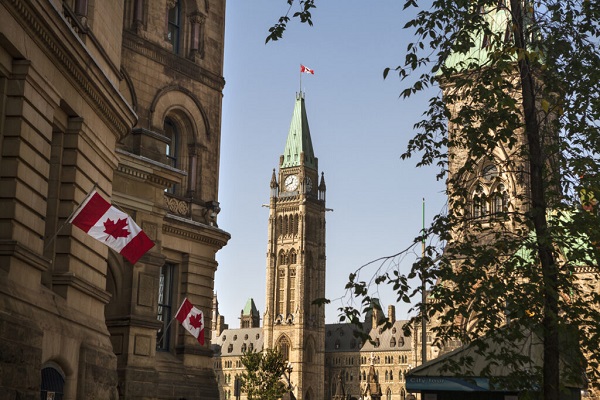
 Business2 days ago
Business2 days agoIs Government Inflation Reporting Accurate?
-
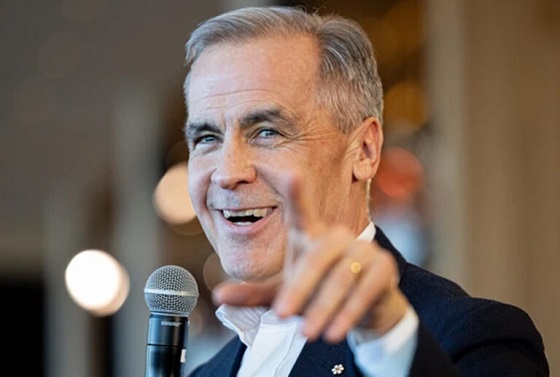
 2025 Federal Election2 days ago
2025 Federal Election2 days agoCarney’s Hidden Climate Finance Agenda
-

 2025 Federal Election2 days ago
2025 Federal Election2 days agoWhen it comes to pipelines, Carney’s words flow both ways
-

 2025 Federal Election2 days ago
2025 Federal Election2 days agoStudy links B.C.’s drug policies to more overdoses, but researchers urge caution
-

 2025 Federal Election1 day ago
2025 Federal Election1 day agoPolls say Canadians will give Trump what he wants, a Carney victory.
-

 2025 Federal Election1 day ago
2025 Federal Election1 day agoCarney Liberals pledge to follow ‘gender-based goals analysis’ in all government policy
-
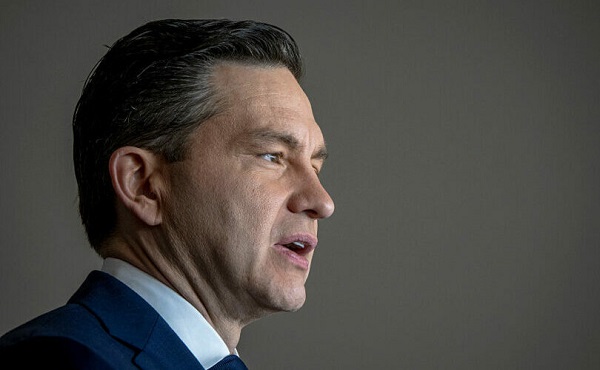
 2025 Federal Election1 day ago
2025 Federal Election1 day agoPoilievre’s Conservatives promise to repeal policy allowing male criminals in female jails
-

 2025 Federal Election1 day ago
2025 Federal Election1 day agoTrump Has Driven Canadians Crazy. This Is How Crazy.


